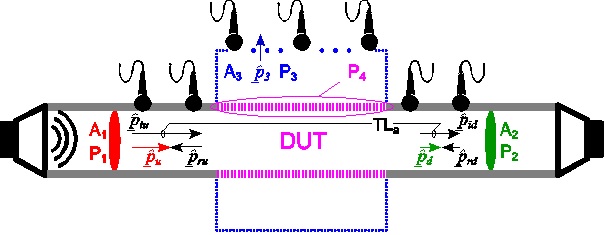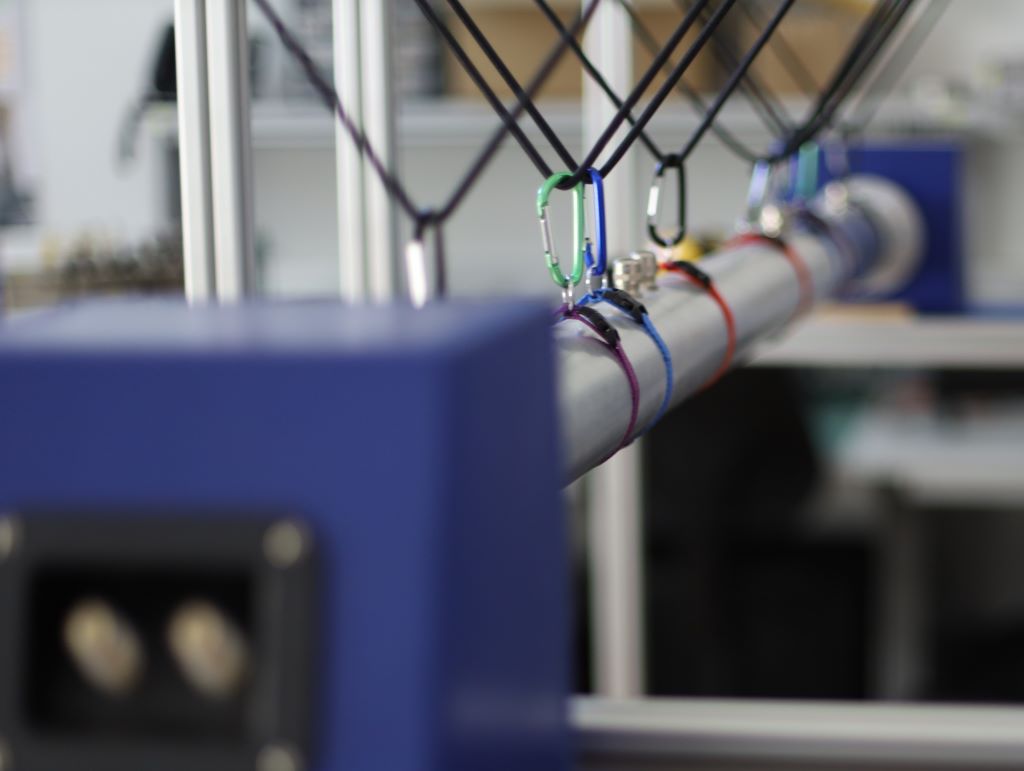Three Port Impedance Tube
If the sample holder and inserted absorber (DUT) are replaced by a porous, open-cell hose, the excitation sound signal also radiates outward, resulting in an acoustic three-port system. Building on the conventional two-port measurement, the axial transmission loss (TLa) is determined. However, TLa not only accounts for axial (hose) wall friction but also includes radial hose absorption and hose transmission effects.
To further distinguish the individual sound components, the incident and reflected sound pressure waves within the tube are analyzed. From these, the sound intensities and the power flow inside the tube—P1 and P2—are calculated based on the known cross-sectional areas A1 and A2. The total sound power radiated outward, P3, is determined by measurements on a virtual enclosing surface A3. Due to the standing wave pattern along the hose, this measurement is conducted at several microphone positions.
Once the power components P1, P2, and P3 (via measurement) and P4 (via energy balance) are known, the acoustic behavior of the porous hose can be described using various characteristic values. Particularly meaningful parameters include the axial transmission loss (TLa), the hose characteristic value (SKW3), and the overall power balance.
Once the power components P1, P2, and P3 (via measurement) and P4 (via energy balance) are known, the acoustic behavior of the porous hose can be described using various characteristic values. Particularly meaningful parameters include the axial transmission loss (TLa), the hose characteristic value (SKW3), and the overall power balance.


